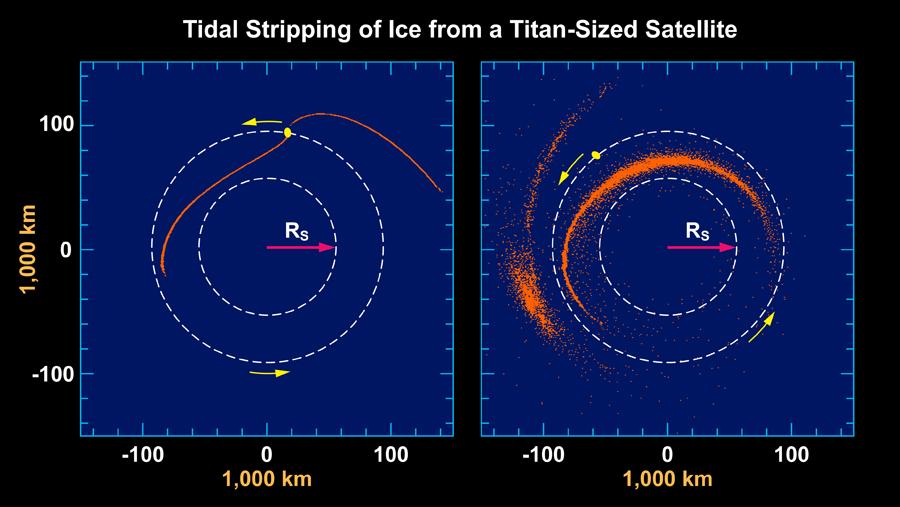Tidal Stripping of Ice from a Titan-Sized Satellite

| Language |
|
|---|
At the end of the formation of Saturn's satellites, a Titan-sized satellite spirals inward towards the planet due to interaction with the primordial circumplanetary gas disk. As the satellite approaches the planet's surface, planetary tides strip material from its outer icy layers, producing material that eventually forms a massive ice ring.
Here, a smooth particle hydrodynamics (SPH) simulation, in which matter is represented as particles, is used to model tidal stripping from a Titan-sized satellite consisting of 45 percent ice in an outer mantle and 55 percent silicate and metal in an inner core. The frames show material stripped from the satellite after [left] 8 simulated hours and [right] 25 simulated hours, assuming a fixed satellite orbit indicated by the outer dashed circle. On a much longer timescale, the satellite's orbital radius slowly decreases, with tides continuing to strip off ice until the satellite's rocky core collides with the planet. The inner dashed circle indicates Saturn's current mean radius, RS. Saturn's surface at the time of ring formation was larger than this, probably at about 1.5RS.
Image courtesy of SwRI
